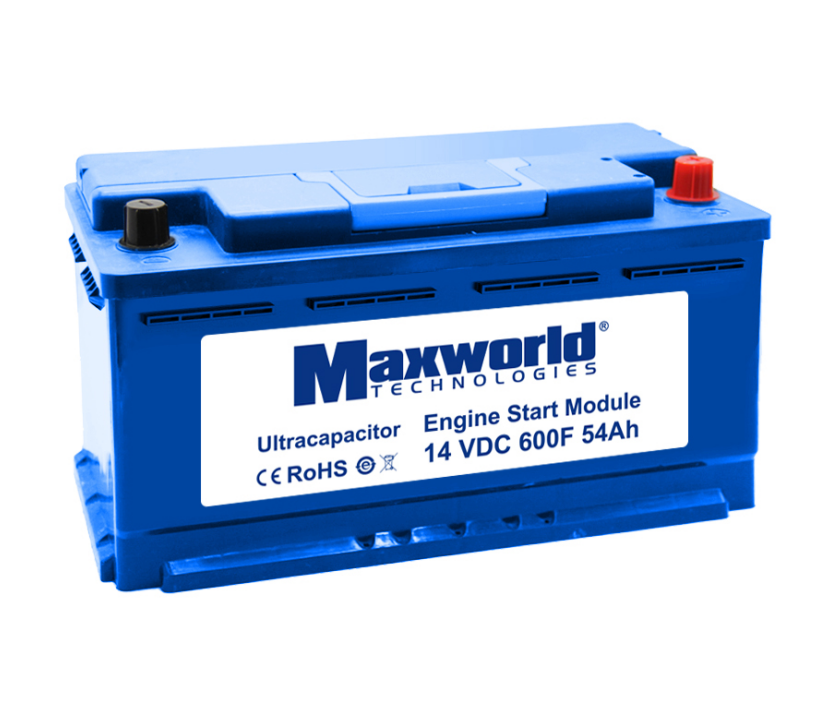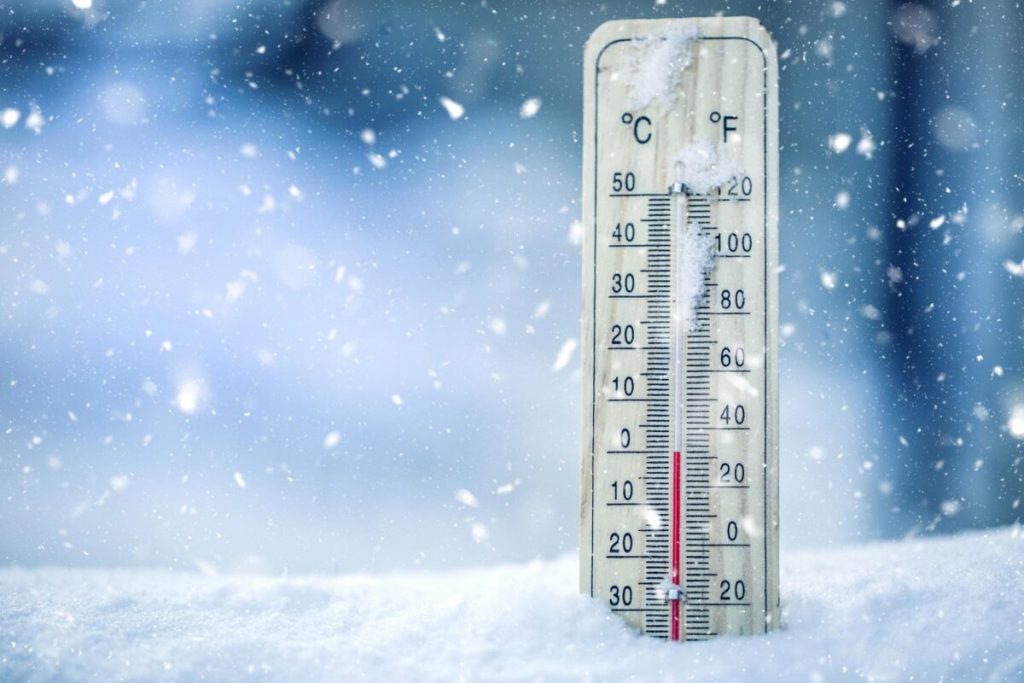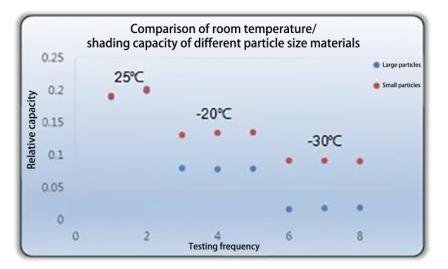
Overview:
Maxworld Power recently introduced a new product, the low-temperature lithium iron phosphate battery, which can be charged even at 0°C and negative temperatures. In this article, we will talk about the “principle” and “performance” of low temperature lithium battery.
Does cold temperature affect lithium-ion batteries
Cold weather does affect battery life, even with lithium batteries. Temperatures below the 32 degrees mark will reduce both efficiency and usable capacity of lead acid noticeably, providing 70-80% of its rated capacity.

Principle:
Users often complain about the performance of a 12v 100ah LiFePo4 battery at low temperatures. The performance of low temperature LiFePo4 100ah can be explained from two aspects: materials and electrochemistry. Let’s talk about interpretation in terms of materials.
Principle1:
For electrolytes, the main components of the solvent are cyclic esters and chain esters.
A common feature of these solvents is that the electrolyte becomes less liquid at low temperatures, and some electrolytes even partially solidify at -30℃ to -40℃. In this way, the conduction velocity of lithium in the electrolyte will slow down at low temperature, thus reducing the low-temperature charge-discharge performance of the lithium battery12v 100ah. The melting points of common solvents in electrolytes are shown below. Solvents with lower melting points are more suitable for use at low temperatures.
Principle2:
For the negative and positive materials, the discharge process of lithium batteries is the process of lithium ions from the negative electrode into the positive electrode.
When the battery is charged at a low temperature, the resistance of lithium ions from the negative electrode to the positive electrode increases, increasing the resistance of the whole reaction.
Principle3:
When charged at low batteries temperatures, the anode has a very clear tendency to remain pristine, making it harder for lithium ions to embed.
Take discharge as an example, as described in the performance section, the voltage of low-temperature discharge is significantly lower than that of normal temperature discharge. What is the electrochemical mechanism behind this phenomenon? The answer is an increase in battery “polarization” at low temperatures. Polarization in a battery refers to the difference between the battery and its equilibrium state (when in use) during charging and discharging. Daily charging and discharging can cause battery polarization. One result of polarization is a voltage different from the equilibrium state. For example, a battery with an equilibrium voltage of 3.9 V will instantly drop its discharge voltage from 0.5 C at room temperature to about 3.8V, and from 0.5 C at low temperature to about 3.7V. The two corresponding voltage differences (3.9V-3.8V at room temperature and 3.9V-3.7V at low temperature) are the result of polarization, and the name of the pressure difference is over potential.
Polarization in the cell includes electrochemical polarization and concentration polarization.

Performance:
For lithium-ion batteries, no matter national or enterprise standards, the lower limit of discharge temperature has a strict range: not less than -20℃. As for the charging temperature, it will not only stipulate the minimum temperature like discharge, but also clearly stipulate that it can only be charged at a low temperature at a small rate, and can not be fully charged (such as 0~15° charging) C can only be done under 0.2C, and the upper voltage is 4.0V), to avoid users crossing the minefield. So the question is, what users need is an all-in-one fighter jet with both high and low-temperature performance, but why do lithium battery manufacturers set such harsh restrictions?
Let’s start with the performance of low temperature lithium battery. For the same discharge rate, the lower the external temperature, the lower the discharge voltage.
When the temperature decreases, the discharge voltage of the lifepo4 12v 100ah also decreases greatly, so that the battery will reach the cut-off voltage faster at low-temperature discharge, resulting in the low-temperature discharge capacity being significantly lower than the room temperature capacity. It should be noted that the capacity of a lithium-ion battery does not disappear at low temperatures, but it cannot discharge completely within the normal voltage range (≥3.0V). If the discharge cut-off voltage can be further extended, the remaining capacity can be discharged. However, the problem is that low voltages do not maintain the normal use of electrical equipment, so the low lower limit voltage (<2.5V) is generally not very meaningful to discuss.

Compared with low-temperature discharge, the low-temperature charging performance of the lithium-ion battery is more unsatisfactory. Firstly, low-temperature charging will soon reach the constant voltage stage, which will reduce the charging capacity and increase charging time to a certain extent.
In addition, when lithium-ion batteries are charged at low temperatures, lithium ions may not be embedded in the graphite cathode, resulting in the precipitation of lithium dendrites on the cathode surface and the formation of lithium metal dendrites. The reaction consumes lithium ions in the battery, which can be charged and discharged repeatedly, greatly reducing the battery’s capacity. The separation of lithium metal dendrites may also Pierce the diaphragm, thus affecting safety performance. Lithium evolution on the cathode surface of lithium-ion battery after low-temperature charging.
The discharge capacity of the lithium-ion battery decreases at low temperature but can be recovered after charging and discharging at room temperature, which is a reversible capacity loss. But low-temperature charging can lead to lithium precipitation, a permanent loss of capacity.
The control of the low temperature charge of lifepo4 battery 12v 100ah is more strict than that of low-temperature discharge because of the great harm caused by the low-temperature charge of low temperature lithium battery. At present, many battery enterprises describe the charging situation of lithium-ion batteries in the way of “step-by-step charging”.
Although the description of phased charging may seem a bit confusing to customers, it is a common method used by battery manufacturers to avoid lithium generation at low temperatures,
Summary:
Now it’s time for a summary. Due to the low voltage platform at low temperature, the discharge capacity of the lithium-ion battery will be significantly reduced at low temperature, but this loss will be automatically compensated by charging and discharging at room temperature, which is a reversible loss. However, for low-temperature charging, too low a temperature or too high a rate will lead to irreversible lithium dendrite formation and irreversible capacity loss, affecting the safety performance of the battery.
What temperature is too low for batteries
The standard rating for batteries is at room temperature 25 degrees C (about 77 F). At approximately -22 degrees F (-30 C), battery Ah capacity drops to 50%. At freezing, capacity is reduced by 20%. Capacity is increased at higher temperatures – at 122 degrees F, battery capacity would be about 12% higher.
Conclusion:
The best cold battery for cold weather meets the requirements for reliable energy storage solutions. To meet the requirements for reliable energy storage solutions for outdoor applications in cold countries, Maxworld Power development engineers have long been committed to finding the right solution, resulting in the introduction of the new technology. Therefore, for your cryogenic energy storage solution, please choose our batteries as your completely reliable supplier. If you want to know more about low temperature lithium battery, feel free to contact us.

